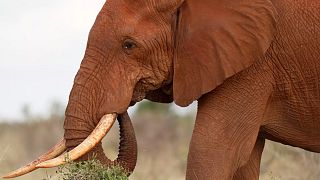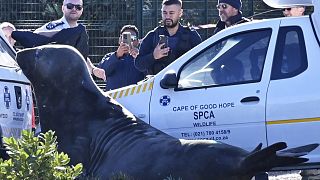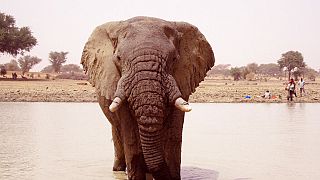China
Scientists at the University of Hong Kong have found a new method to help police distinguish between elephant and mammoth ivory.
International trade in elephant ivory was banned by the Convention on International Trade in Endangered Species in 1989, but 20,000 African elephants are killed each year for their tusks, according to the World Wide Fund for Nature.
"Elephant ivory is the ivory, its texture and its colour have always been prised by carvers", said Dr Pavel Toropov of the University of Hong Kong, an author of the article published in Frontiers in Ecology and Evolution.
Traffickers often disguise elephant tusks to look like mammoth ivory, which can be traded legally.
Woolly mammoths went extinct in the last glacial period around 10,000 years ago. Traders dig up their tusks from under the Siberian permafrost.
Elephant and mammoth tusks might look the same to the untrained eye, but ivory from the extinct prehistoric animal is of lower quality.
China has long been one of the world's largest market for elephant ivory. The country enacted a complete ban on ivory sales on 31 December 2017. But smugglers can use mammoth tusks to circumvent regulations.
"Mammoth ivory can be used as a laundering method for elephant ivory", Dr Toropov said.
"A shipment comes in of absolutely legal mammoth ivory, labelled as such and the customs let it through. But within that, you can mix elephant ivory."
Law enforcements agents are rarely trained to recognise elephant from mammoth ivory. Scientists have found a way to differentiate the two materials using chemistry.
Elephants and mammoths lived in contrasting environments. The water they drank was made of hydrogen and oxygen that took different forms, called isotopes.
By comparing isotopic signatures, experts could tell which tusks belonged to which species.
"The idea is to create a tool for the law enforcement", Dr Toropov said. "It's quick, it's cheap, but it requires a lab. So the idea is that law enforcement work with laboratories who have that method dialled down and then that can be made very efficient."
Elephant populations have fallen from 12 million a century ago to around 400,000 today, according to WWF.













01:32
Trump, Xi meet in person as US and China move to ease trade tensions
01:00
Elephants at Oregon Zoo crush giant pumpkins to celebrate Halloween
02:22
Living with lions: Encounters with wild animals on the rise near Nairobi National Park
Go to video
Scientists develop vaccine to protect young elephants from potentially lethal herpesvirus
02:02
African penguin faces extinction despite new protections
00:38
Somaliland: eleven cheetah cubs rescued from illegal trade in exotic pets